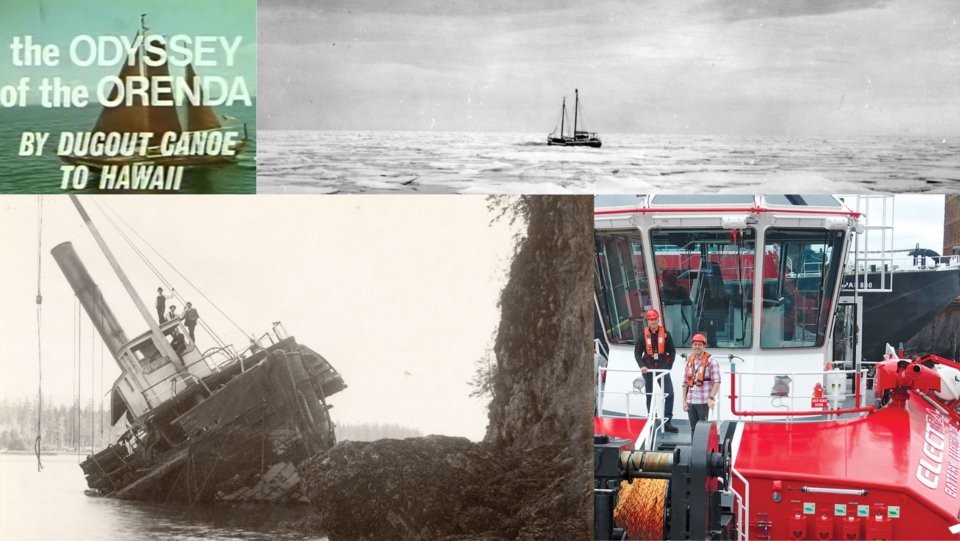Ships have played an essential role in Vancouver's history, starting long before the city was founded.
Local indigenous groups used canoes as part of everyday life, moving about the region in large dugout boats they carved by hand from the massive trees that grew here for thousands of years.
The first Europeans arrived here via ships; José María Narváez captained a Spanish expedition in 1791, followed by the city's namesake, Capt. George Vancouver, in 1792.
As European colonization grew in what would become B.C., the ships and boats were essential to that growth as a means of transportation, access to food (fishing), and economic tool for everything from shipping lumber and fish before railways arrived to moving visitors around the area.
Nowadays ships still play a big role in the city with the Port of Vancouver moving billions of dollars of goods and the cruise ship terminal bringing tens of thousands. There are also all the recreational activities, tourist businesses, and BC Ferries to include.
So here are five ships facts that you may not know.
1. When the S.S. Beaver got stuck it became a tourist attraction.
The S.S. Beaver is arguably the most famous ship in B.C.'s history. It was the first steamer to work the coast, arriving from London on the West Coast in 1836, and travelling from the Columbia River to what is now Alaska.
By the 1870s it was being used as a towboat in the Vancouver area, and in 1888 it was run aground (there were more than a couple of rumours the captain was a drunk and the night it crashed).
It ended up on the rocks on the northwest point of Stanley Park, already a popular place to hang out for the locals. The wreck, which was just offshore, drew many gawkers. Some even climbed aboard and took a piece home.
It wasn't like they had to rush though; it took four years for the wreck to finally slip beneath the surface (after another ship bumped it).
2. The Green Hill Park explosion
In 1945 the S.S. Green Hill Park (a Park was a type of ship) exploded, shattering windows in downtown Vancouver and shaking buildings away.
The ship had been loaded with sodium chlorate, a chemical used to bleach paper, but which is also highly explosive and doesn't require oxygen to explode.
It also has some overproof whiskey.
Tugs were able to tow it to Stanley Park, where it was beached not far from where the Beaver had once been stuck.
Once the destruction was surveyed eight men were confirmed dead.
In an effort to prove the Haida could have been the predecessors to the Polynesian people of the Pacific Ocean, Geordie Tocher set out on an epic journey.
He carved his own version of a dugout canoe, called it the Orenda, convinced another sailor to join him, and set out for Hawaii in 1971. They ended up wrecking off the coast of California.
But that didn't stop him.
In 1978, in the Orenda II (a Douglas fir he'd carved into another large dugout canoe) he and two others set sail for Hawaii.
This time they made it.
The St. Roch had an epic career. The boat may not look as impressive as some other ships, but the federally commissioned schooner was the first ship to complete the Northwest Passage going west to east (also the second to complete the journey in either direction) and the first to circumnavigate North America.
It was built so Canada could assert some level of sovereignty over the north in the 1930s, as few government resources could reach the northern pieces of the country.
In 1954 it was decommissioned in Halifax and made one more long journey to Vancouver, where it rests inside the Vancouver Maritime Museum.
Tugboats have been a sight in Vancouver's harbour and the Burrard Inlet for more than a century.
The idea is simple. Put a big diesel engine in a little boat and use it to pull or push other ships (and anything else in the water) around.
Now there's one ship in Canada that does that first part differently.
Seaspan and the Haisla Nation launched the world's first electric tug last month, with 7,000 horsepower.
If you're looking for it in Vancouver Harbour, look for the tug that doesn't have smokestacks.




